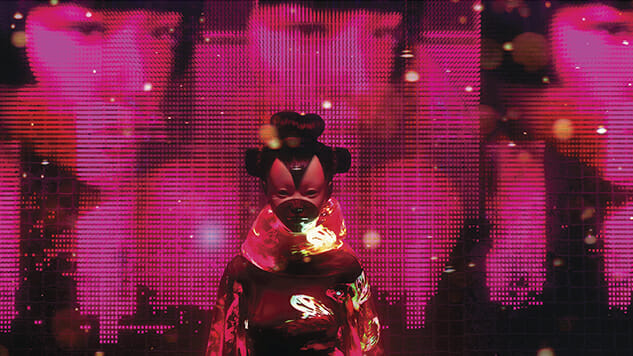Exclusive Photos from Ghost in the Shell, Plus Six Things We Learned from Its Awesome Art Book
Images courtesy of Paramount
Can’t wait to see Rupert Sanders’ adaptation of The Ghost in the Shell? We can’t, either. The manga series turned anime franchise turned major studio live action film (starring Scarlett Johansson, no less) hits theaters this weekend, and the wait will finally be over. In the meantime, here are six things we’ve already learned from David S. Cohen’s gorgeous book, The Art of Ghost in the Shell, which you can purchase here.
1. For the film’s director, that ScarJo controversy is kind of a non-issue.
Some groups were upset that Johansson is … well, noticeably more Caucasian than the Japanese hero of the series. But for director Rupert Sanders, it really came down to the unique assets that she could bring to the project:
“‘There’s very few Scarlett Johanssons,’ says Sanders with a smile. ‘Globally, there’s very few actresses who have that kind of edge to them. She’s got a very cyberpunk edge to her. She’s tough… She showed she could be an action movie star. It’s hard to be a movie star and it’s very hard to be an action movie star. And she had all of those facets. That to me was the Major.’”
2. Sanders channeled his inner DJ to prepare.
Many directors are known to go to great lengths to immerse themselves in the worlds they are creating, but not many create their own book, and not many are able to slice and dice elements from so many other iterations of that world:
“In order to articulate his own vision for the project Sanders then created his own graphic novel, a hundred-page comic showing which story beats he would want to hit. ‘Like a DJ sampling records, I was down in the basement sampling Ghost in the Shell: Stand Alone Complex, pulling out pieces and trying to knit them together,’ he says. ‘I reframed the story in a way that to me felt more [than the existing script] like it was from that world. And then I showed it to Steven and Avi, and everyone liked it.’”
3. In this movie, the Eighties are alive and well.
If you think that new wave hairdos and Members Only jackets never should have gone out of style, you’re in for a treat:
“[Original creator Masamune] Shirow had conceived the story in the 1980s, before ubiquitous Internet, cellular phones, and wireless data networks, so his vision of the future didn’t account for any of those inventions. Sanders’s live-action film wouldn’t reinvent the technology or history of Ghost in the Shell to incorporate advances in the real world. Instead, it would create a parallel future based on the notion that the Ghost in the Shell universe went one way in the 1980s, while our world went another. Fashions and hairstyles from the 1980s would persist in this Ghost in the Shell universe. ‘Creatively, the decision was made that the past is the future,’ says supervising art director Richard Johnson.’”
4. The production design of the film is never design for its own sake.
-

-

-

-

-

-

-

-

-

-

-

-

-

-

-

-

-

-

-

-

-

-

-

-

-

-

-

-

-

-

-

-

-

-

-

-

-

-

-

-














































